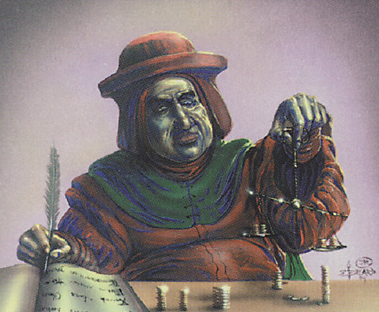Are you a Quiet Speculation member?
If not, now is a perfect time to join up! Our powerful tools, breaking-news analysis, and exclusive Discord channel will make sure you stay up to date and ahead of the curve.
As a person who has had the advantage of working in a game store for many, many years, I'm able to draw upon that experience to predict potential future MTG-related investments. The biggest advantage of that experience behind the counter is being able to see what kinds of cards different people buy and what they do with them.
Don't Put All Your Eggs in Spike's Basket
A lot of financers focus on "Spike." It is certainly a good strategy because Spike buys a decent amount of cards, and when a bunch of Spikes are all making a run at the same cards in Standard, Modern, and Legacy, those cards tend to do well financially, at least in the short term while the metagame is shifting.
Grim Lavamancer is a great example of a spikey card that has done really well lately. The card happens to be very well positioned in Modern. It's also just a very good card in general. As a result, with more and more top eight lists including this small angry fellow, it makes sense that others looking to duplicate that success will follow the leader. It also helps that the card can be realistically played in many different viable decks. Basically, if you are playing red and want to machine gun down small creatures, Grim Lavamancer is your Lava Man.
It's a flashy pick, and if you made the move to get in on Lavamancer before the hype train kicked in, great work. The problem with focusing on these types of picks is that they don't happen frequently or consistently. How often does a card really break out and change the dynamic of an established metagame? Sometimes, but not all the time.
For sure, pay attention to what Spike is buying and sleeving up, but experience has taught me to diversify. There are plenty of other, more obscure markets that offer terrific value for the taking.
Observing the Casual Crowd
Flashback to my flashback about working behind the counter at the LGS. I know how Spike shops for singles. It's basically making fine tunes their decks when something shifts and requires an adjustment. It's nice that Spikes are always making fine tunes to their decks, and that they're often buying into a price increase since they are more often than not "following the leader."
You may be surprised to know that Spikes don't equate for the biggest chunk of Magic, or even MTG singles sales, when it comes to the big picture at a game store. Not even close.
In fact, it is the casual crowd that comprise the big spenders with the deep pockets, and I've always paid close attention to what kinds of cards they buy, what kinds of decks they play, and what they are into when it comes to collecting Magic cards. It's hard to really nail down what Timmy and Johnnny like to play and buy, largely because we can't go to MTGTOP8 and quantify "The Casual Metagame." Every kitchen table has a completely different meta from the next, yet all casual metas share some similarities.
There is a certain stigma associated with "casual crowd." Even though I know better, there is still a part of me that returns to the late 2000s when I hear "casual" and thinks about friends who had unsleeved Mono-Black decks full of useful commons like Hymn to Tourach and pump Knights. The person with the shoebox full of random cards is much less a thing now than in the olden days. I'm sure that plenty of people still find joy with their friends with a shoebox full of random cards, and I hope they do – I started that way – but, whether or not these elusive individuals exist or not is largely arbitrary to my discussion.
The fact is that the "casual" players who spend money on singles are organized, intelligent, and dedicated to playing Magic on their own terms. Whether it be Commander or brewing off the wall decks with cards they like to play against like-minded friends, these individuals play the game.
The Difference Between Casual and Competitive
I think the intuitive way to differentiate between the two groups is to say that competitive players focus on playing in tournaments and casual players do not. I think this tends to be technically correct, which is of course the best kind of correct.
The question becomes: how accurate is this presumption? Pauper is not a real "tournament format" with Grand Prix, yet lots of people love that format. Have you ever seen people "go-deep" on their Commander decks? All the time. It's not a tournament format. Even players who simply jam whatever they want at the kitchen table once a week, isn't that a sort of tournament where the individuals involved basically agree to play a format they enjoy and meet up?
I actually believe the biggest difference between competitive Magic and casual Magic has to do with the type of games players agree to play with one another. In competitive Magic, the focus of deckbuilding and gameplay is on the first four turns of the game. In casual Magic the emphasis is placed on turn four and beyond.
There are a few reasons that I believe this to be true:
- Multiplayer Adaptable - Casual decks tend to exist in a matrix where they are used both for 1v1 duels and multiplayer. "Competitive" decks focused on executing in the first few turns don't always fare well in multiplayer. Without an infinite combo (which is generally frowned upon in a casual game), it's hard to defeat three other players quickly when they are all packing Wrath of Gods.
- Commander starts players with 40 life. It's way hard to play an aggressive beatdown deck against one opponent with 40 life. Worse against multiple players with 40 life!
- Longer games with bigger, more exciting bombs are more fun to play. Constructed Magic is about grinding known matchups between the established "Best Decks." In a casual game, there is nothing on the line besides playing for fun and enjoyment, and so deckbuilding reflects that "fun" element.
What Does a Good Casual Card Do?
We all know what good tournament cards look like, but what does a good casual card look like? Well, casual players obviously like great cards, and there is a ton of crossover between what people play in Constructed and at the kitchen table. For our puroses today, I'm more interested in cards that are, or will become, staples at kitchen tables everywhere, but will be largely ignored in Constructed. To that end, I present:
The Best Casual Cards in Core Set 2019
Let's apply what I've suggested to the most recent MTG set. These are the casual cards that I think fit the mold of what the casual crowd will be into a month from now or even five years from now. If the shoe fits, run away with the value.
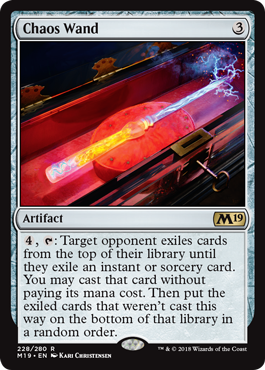
I love this card as a casual staple. I've been plucking them up for cheap whenever I can. The card has Commander/casual staple written all over it. First of all, it's super powerful in any metagame where people are focused on going big rather than being efficient. In Commander, chances are that you'll be paying four mana to cast more expensive spells! Foil copies also seem like savage value right now.
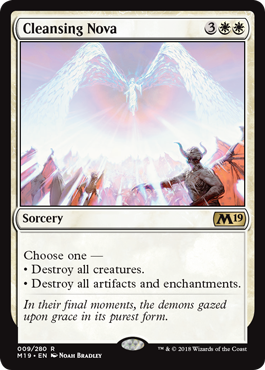
I love this card for multiplayer. Cards like Austere Command and Akroma's Vengeance are already mainstays, and this card is a mana cheaper and can be more flexible. Sweepers are great in a slow, multiplayer game – and this is a very, very good sweeper.
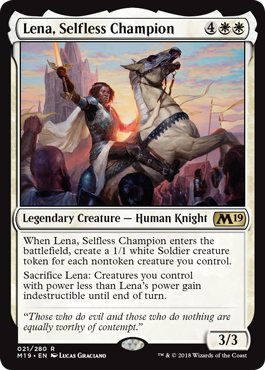
It's a bulk rare but actually a great Magic card. I could actually see myself playing with this card in a Commander deck. It does the two things that I care about: generates more resources and protects those resources. It's hard to play creatures in multiplayer, but this is the kind of creature I'd want to cast if given the choice.
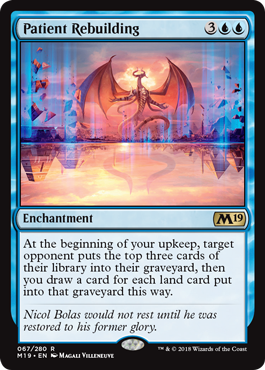
The card is actually pretty powerful. The milling is not arbitrary and it provides the potential for drawing multiple extra cards every turn. I feel like this is a card that would fare well at the kitchen table, despite that fact that the card has basically no value right now.
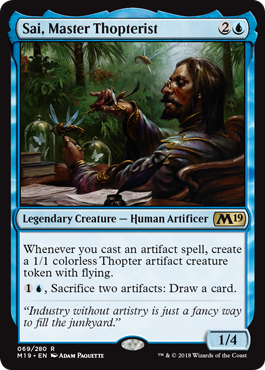
I think this card is actually a Constructed powerhouse on the verge of breaking out across the board, but it's also a great Commander or kitchen-table card. First of all, this would be an insane commander. Second of all, it's basically a powerful free roll in any artifact deck. The fact that it creates resources and can turn those Thopters into raw cards allows this card to basically do many things (all of which matter) at various stages of the game.
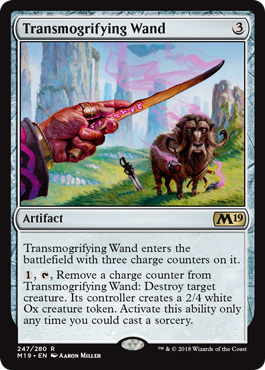
The card looks like it sucks, but it is actually absurdly powerful. The ability to straight up kill three different creatures is impressive, and in multiplayer, the 2/4 tokens do not matter at all. I thought the card was great in my draft deck when I was turning 4/5s into 2/4s. I'd happily pay one mana to destroy a scary dragon or giant monster.
I know that the biggest money in MTG finance lately is grinding Reserved List cards and getting ahead of the Spike spikes. However, there are other areas of value to be observed if you're willing to spend the time and energy. I love these types of investments because they typically cost very little to get into and frequently return a ridiculous percentage yield when they hit. I also love these picks as cards to pull out of $0.25 rare boxes at Grand Prix.
The casual game is real. I'm just as happy to sell cards to a casual player as a Spike. No matter the type of player you are selling to, remember that their money spends the same as anybody else's!


